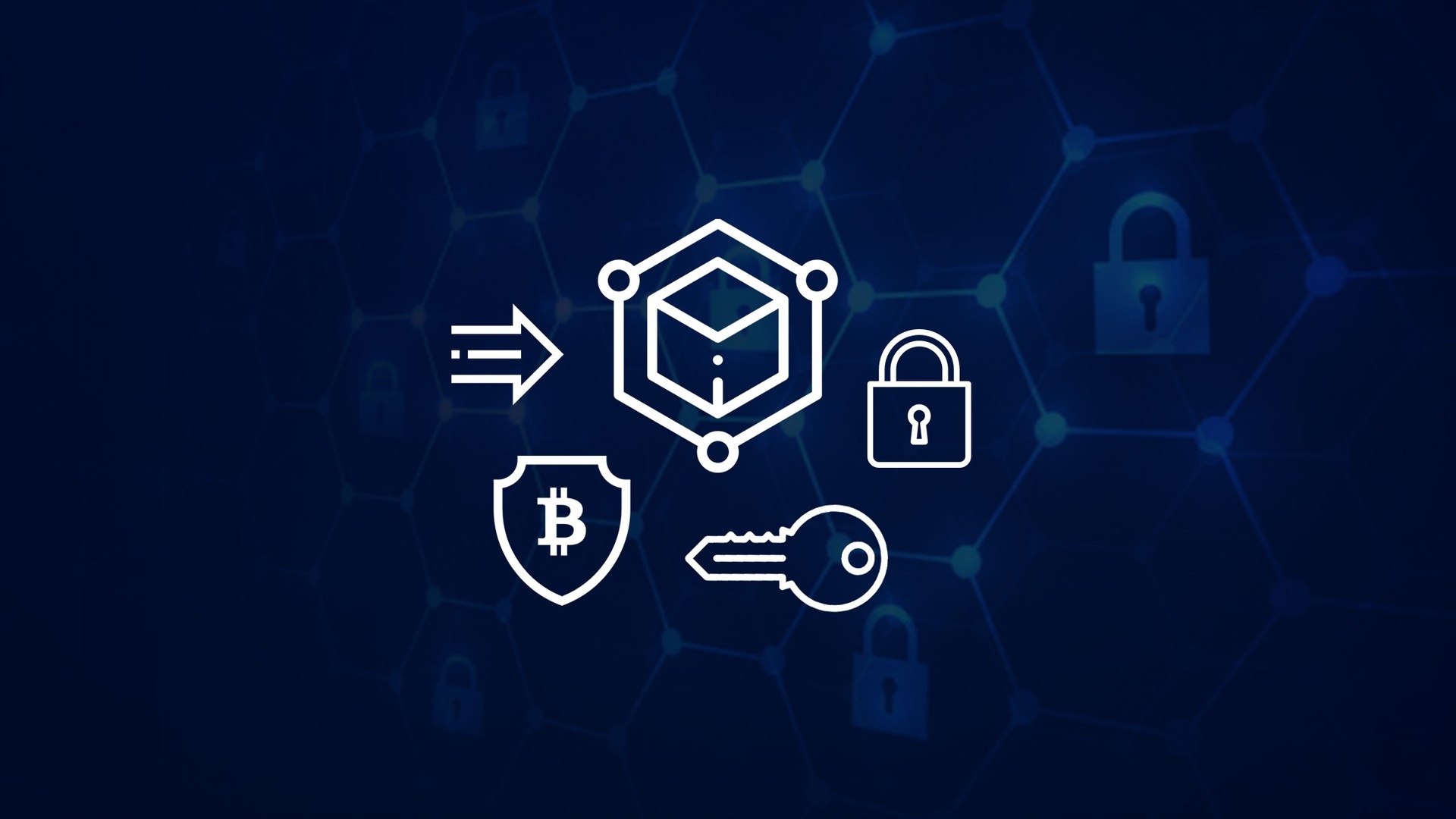Introduction
Blockchain technology has taken the world by storm in recent years, revolutionizing various industries and changing the way we perceive security and trust in digital transactions. From cryptocurrencies to supply chain management and beyond, the applications of blockchain are vast and promising.
But what exactly is blockchain? How does it work? And why is it considered secure? In this article, we will delve into the fascinating world of blockchain and explore its key features that contribute to its robust security.
At its core, blockchain is a decentralized and distributed ledger that securely records and verifies transactions. Unlike traditional centralized systems, where a single entity controls the transaction history, blockchain operates on a network of computers known as nodes, all working together to validate and store transactions in a transparent and tamper-proof manner.
One of the main reasons why blockchain is considered secure is its immutability. Once a transaction is recorded on the blockchain, it becomes nearly impossible to alter or delete it. This characteristic is achieved through cryptography, which ensures the integrity and authenticity of the data stored on the blockchain.
Furthermore, blockchain utilizes consensus mechanisms, such as proof-of-work or proof-of-stake, to validate transactions and maintain the integrity of the network. Consensus mechanisms ensure that the majority of nodes agree on the validity of transactions, preventing fraud and malicious activities.
Another crucial aspect of blockchain security lies in its use of public and private keys. These cryptographic keys enable secure communication and authentication between users on the network. Public keys are used to encrypt transactions, while private keys are required to decrypt and access the stored data.
As we explore the intricacies of blockchain security, we will also gain a deeper understanding of the relationship between blockchain and decentralization. The decentralized nature of blockchain removes the need for intermediaries, reducing the risk of single points of failure and increasing resilience against hacking or data manipulation.
Ultimately, the security of blockchain comes down to trust – trust in the network, the consensus mechanisms, and the cryptographic protocols. Through its innovative design and cryptographic techniques, blockchain technology aims to provide a secure and transparent platform for digital transactions and data storage.
In the following sections, we will dive deeper into the inner workings of blockchain, exploring encryption, consensus mechanisms, ledger immutability, network security, and the role of decentralization in ensuring the integrity and security of blockchain-based systems.
What is Blockchain?
Blockchain is a decentralized and distributed digital ledger that records and verifies transactions in a secure and transparent manner. It is the underlying technology behind popular cryptocurrencies like Bitcoin and Ethereum, but its applications extend far beyond digital currencies.
The blockchain consists of a chain of blocks, each containing a list of transactions. These blocks are linked together through cryptographic hashes, forming an immutable and tamper-proof record of all transactions on the network.
Unlike traditional centralized systems where a central authority controls the transaction history, blockchain operates on a peer-to-peer network. This decentralized structure eliminates the need for intermediaries, such as banks or governments, and gives users direct control over their transactions.
When a transaction is initiated on the blockchain, it is broadcasted to the network of nodes. These nodes collectively validate the transaction and ensure its accuracy and legitimacy through consensus mechanisms. Once validated, the transaction is added to a block, which is then added to the blockchain.
One of the key features of blockchain is its transparency. Every participant on the network has access to the entire transaction history, including the details of each transaction. This transparency fosters trust among users and reduces the risk of fraud or manipulation.
Another essential characteristic of blockchain is its security. Due to its decentralized nature and cryptographic mechanisms, the blockchain is highly resistant to tampering and fraud. Once a transaction is added to the blockchain, it becomes extremely difficult, if not impossible, to alter or delete it.
Furthermore, blockchain offers a higher level of data integrity and immutability. Each block in the chain contains a unique cryptographic hash, which is generated based on the data within the block. Even a small change in the data would result in a completely different hash, alerting the network to the tampering attempt.
Overall, blockchain technology provides a transparent, secure, and efficient way of recording and verifying transactions. Its decentralized nature, transparency, and immutability make it an ideal solution for various industries including finance, supply chain management, healthcare, and more.
In the following sections, we will explore the inner workings of blockchain and its key features that contribute to its security and trustworthiness.
How Does Blockchain Work?
Blockchain technology operates on a decentralized network of computers known as nodes. These nodes work together to create, validate, and store transactions in a secure and transparent manner. Understanding how blockchain works involves exploring several key components and processes:
Transactions: Blockchain begins with the initiation of a transaction. This could be a transfer of digital currency, the recording of an asset ownership, or any other form of digital interaction. Each transaction contains relevant information, such as the sender, the recipient, and the details of the transaction itself.
Validation through Consensus: Once a transaction is initiated, it is broadcasted to the network of nodes. These nodes collectively validate the transaction by confirming the authenticity, accuracy, and compliance with the predefined rules of the blockchain network. Consensus mechanisms, such as proof-of-work or proof-of-stake, are used to ensure agreement among the majority of nodes.
Creation of Blocks: Once a transaction is validated, it is grouped with other transactions to form a block. Each block contains a unique identifier called a cryptographic hash, which is generated based on the data within the block. This hash links the current block with the previous block, creating a chain of blocks – the blockchain.
Verification and Linkage: As new blocks are added to the blockchain, each node on the network verifies the validity of the transactions within the block by performing complex cryptographic calculations. This verification process ensures the integrity and immutability of the blockchain. If a consensus is reached, the new block, along with its hash, is added to the chain.
Immutability and Security: Once a transaction is added to the blockchain, it becomes nearly impossible to alter or delete it. The decentralized nature of blockchain, combined with cryptographic algorithms, ensures the security and tamper-proof nature of the data stored within the blockchain.
Decentralized Ledger: The ledger, which contains the history of all transactions, is distributed across the network of nodes. Each node maintains a copy of the entire blockchain. This decentralization enhances security, resilience, and transparency while eliminating the need for a central authority to control and validate transactions.
Consensus Maintenance: To maintain consensus and prevent malicious activities, blockchain networks employ various consensus mechanisms. These mechanisms act as a set of rules, determining how transactions are validated, added to the blockchain, and how conflicts or discrepancies are resolved.
By combining cryptographic techniques, peer-to-peer networking, consensus mechanisms, and decentralization, blockchain technology provides a transparent, secure, and trustless system for recording and verifying digital transactions.
As we continue our exploration, we will delve into the key features of blockchain, including public and private keys encryption, the concept of a tamper-proof ledger, as well as network security measures implemented in blockchain systems.
Key Features of Blockchain
Blockchain technology is powered by several key features that contribute to its security, transparency, and efficiency. Understanding these features is essential for comprehending the unique nature of blockchain systems. Let’s explore some of the key features:
Decentralization: One of the fundamental features of blockchain is its decentralized nature. Unlike traditional centralized systems, where a central authority controls the data and transactions, blockchain operates on a distributed network of nodes. This decentralization eliminates the need for intermediaries, reduces single points of failure, and increases the overall resilience and security of the network.
Transparency: Blockchain provides unparalleled transparency as it offers an open and accessible record of all transactions. Every participant on the network has access to the complete transaction history, ensuring transparency and accountability. This transparency fosters trust among participants and reduces the risk of fraud or manipulation.
Immutable and Tamper-Proof Ledger: Once a transaction is recorded on the blockchain, it becomes nearly impossible to alter or delete. This immutability is achieved through the cryptographic hash function, which generates a unique identifier for each block. The hash links the blocks together, creating a chain, and any modification to the data will result in a different hash, making it evident that tampering has occurred.
Cryptographic Security: Cryptography plays a crucial role in securing blockchain systems. Each transaction on the blockchain is encrypted using public-key cryptography. Public keys, freely shared by users, are used to encrypt transactions, ensuring confidentiality. Private keys, known only to the owner, are used to decrypt and access the data. This encryption adds an additional layer of security to the blockchain.
Consensus Mechanisms: Blockchain networks utilize consensus mechanisms to validate and agree upon the state of the blockchain. Common consensus mechanisms include proof-of-work (PoW) and proof-of-stake (PoS). These mechanisms ensure that the majority of nodes on the network agree on the validity of transactions, preventing double spending, fraud, and maintaining the integrity of the blockchain.
Efficiency and Cost-Effectiveness: Blockchain can streamline processes, increase efficiency, and reduce costs in various industries. By eliminating intermediaries and automating trust, blockchain reduces the complexity and time associated with traditional systems. The decentralized nature of blockchain also removes the need for third-party verification, resulting in cost savings.
Data Privacy: Blockchain allows users to maintain control over their data and choose what information is shared with others. By using cryptographic keys, individuals can grant access to their data while keeping sensitive information private. This data privacy feature is especially important in industries like healthcare and finance, where data security and confidentiality are paramount.
By harnessing the power of decentralization, transparency, immutability, cryptography, consensus mechanisms, and cost-effectiveness, blockchain technology offers a unique approach to secure, efficient, and trusted digital transactions and data management.
In the following sections, we will explore specific components of blockchain security, including public and private key encryption, the concept of a tamper-proof ledger, and the measures taken to ensure network security in blockchain systems.
Public and Private Keys in Blockchain
Public and private keys play a crucial role in ensuring the security and integrity of transactions on the blockchain. These cryptographic keys are used to authenticate users, encrypt and decrypt data, and maintain privacy. Let’s explore the significance of public and private keys in blockchain:
Public Key: A public key is a randomly generated cryptographic key that is freely shared by users on the blockchain network. It acts as an address or identifier for a user and is used to receive encrypted messages and transactions. Public keys are derived from the corresponding private keys using mathematical algorithms. While public keys are visible to everyone on the blockchain, they do not reveal any sensitive information about the user.
Private Key: A private key is a secret cryptographic key known only to the user. It is used to decrypt and access the encrypted transactions and data associated with the public key. Private keys are generated along with the corresponding public keys and must be kept securely. Losing or compromising the private key can result in permanent loss of access to the associated assets or data on the blockchain.
Encryption and Decryption: Public and private keys are used in a process called asymmetric encryption to secure transactions on the blockchain. When a sender initiates a transaction, the public key of the recipient is used to encrypt the transaction information. Once the transaction reaches the recipient, their private key is used to decrypt and access the transaction data. This encryption-decryption process ensures the confidentiality and integrity of data transmitted on the blockchain.
Digital Signatures: Another critical application of public and private keys is in the generation of digital signatures. A digital signature is created by combining a user’s private key with the transaction data. This signature acts as proof of authenticity and non-repudiation. Verifying the digital signature requires the public key of the signer. By verifying the digital signature, users can ensure that the transaction has not been tampered with and was indeed initiated by the claimed sender.
Address Generation: Public keys are often hashed using cryptographic algorithms to generate shorter and more user-friendly addresses. These addresses serve as the destination for transactions on the blockchain. When users want to receive funds or assets, they share their public address, which is derived from their public key. The privacy of the user is protected as the original public key is not revealed through the address.
Public and private keys are at the core of blockchain security. They enable secure communication between users, ensure the confidentiality of data, authenticate transactions, and protect the integrity of the network. It is vital for users to protect their private keys and follow best practices for key management, as the loss or compromise of private keys can result in irreversible consequences on the blockchain.
In the next sections, we will explore the crucial role of encryption in blockchain, the consensus mechanisms that maintain the integrity of the blockchain, and the immutability and tamper-proof nature of the blockchain ledger.
Encryption in Blockchain
Encryption is a critical component of blockchain technology that ensures the security and confidentiality of data shared on the network. By utilizing cryptographic algorithms, blockchain encrypts sensitive information, protecting it from unauthorized access and manipulation. Let’s explore the significance of encryption in blockchain:
Confidentiality: Encryption plays a vital role in ensuring the confidentiality of data transmitted on the blockchain. When a user initiates a transaction, the transaction information is encrypted using a recipient’s public key. Only the recipient, with their corresponding private key, can decrypt and access the transaction data. This encryption ensures that sensitive information, such as transaction details and personal data, remains confidential and secure.
Data Integrity: Encryption also ensures the integrity of data on the blockchain. When a transaction is encrypted, a digital signature is generated by combining the transaction data with the sender’s private key. This digital signature acts as a unique identifier and verification mechanism for the transaction. Verifying the digital signature using the sender’s public key ensures that the transaction has not been tampered with, maintaining the integrity of the blockchain.
Secure Communication: Encryption in blockchain enables secure communication and authentication between users. As each user possesses a unique set of public and private keys, any communication or data shared between them can be encrypted and decrypted securely. This secure communication ensures that transactions and information exchanged on the blockchain are protected from unauthorized access and interception.
Protection Against Attacks: Encryption helps mitigate the risk of attacks, such as eavesdropping and data breaches, on the blockchain network. Even if an attacker were to intercept encrypted data, they would be unable to decipher it without the corresponding private key. Encryption makes it significantly more challenging for attackers to gain access to sensitive information and provides an additional layer of protection for blockchain systems.
User Privacy: Encryption in blockchain also safeguards user privacy. By encrypting transactions and sensitive data, users can maintain control over their information and choose what they disclose on the blockchain. Encryption ensures that only authorized parties with the corresponding private keys can access and decrypt the encrypted data, preserving the privacy and anonymity of users on the network.
Overall, encryption plays a fundamental role in ensuring the security, confidentiality, and integrity of data on the blockchain. By utilizing cryptographic algorithms, encryption protects sensitive information, enables secure communication, verifies transaction authenticity, and enhances the overall security of blockchain systems.
In the following sections, we will explore the consensus mechanisms that maintain the integrity of the blockchain, the tamper-proof nature of the blockchain ledger, and the network security measures implemented in blockchain systems.
Blockchain Consensus Mechanisms
Consensus mechanisms are at the heart of blockchain technology, ensuring that all participants on the network agree on the validity of transactions and the state of the blockchain. Consensus mechanisms play a critical role in maintaining the integrity, security, and decentralization of blockchain systems. Let’s explore some of the commonly used consensus mechanisms in blockchain:
Proof of Work (PoW): PoW is the original consensus mechanism introduced by Bitcoin. In PoW, miners compete to solve complex mathematical puzzles in order to add a new block to the blockchain. The first miner to solve the puzzle and validate the block receives a reward. This mechanism requires significant computational power and energy consumption, making it secure and resilient against attacks. However, it is also resource-intensive and can lead to scalability issues.
Proof of Stake (PoS): PoS is an alternative consensus mechanism that selects validators based on their stake or ownership of the cryptocurrency. Under PoS, validators are chosen to add new blocks to the blockchain in a deterministic manner, based on their stake. This mechanism is more energy-efficient compared to PoW and promotes environmental sustainability. However, critics argue that PoS can lead to centralization, as wealthy validators have a higher chance of being selected.
Delegated Proof of Stake (DPoS): DPoS is a variation of PoS where token holders vote to elect a group of delegates who are responsible for validating transactions and maintaining the blockchain. These delegates take turns being the block producers, and stakeholders can vote to choose or remove them. DPoS aims to improve scalability and transaction speed by reducing the number of validators while still maintaining a high level of security and decentralization.
Practical Byzantine Fault Tolerance (PBFT): PBFT is a consensus mechanism used in permissioned blockchains, where a limited number of trusted participants are involved. PBFT relies on a certain quorum of participants to agree on the validity of transactions and the order of blocks. It focuses on reaching consensus even in the presence of malicious nodes or network delays. PBFT offers high throughput and low latency, making it suitable for enterprise blockchain solutions.
Proof of Authority (PoA): PoA is another consensus mechanism used in permissioned blockchains. Under PoA, a limited number of trusted nodes, known as authorities, are responsible for validating transactions and adding new blocks. Validators are selected based on their reputation and identity, rather than computational power or stake. PoA provides fast block confirmation times and is suitable for use cases that prioritize efficiency and scalability over decentralization.
These are just a few examples of the many consensus mechanisms available in blockchain systems. Each mechanism has its own advantages and trade-offs, and the choice of consensus mechanism depends on the specific requirements and goals of the blockchain network.
Consensus mechanisms are essential in maintaining the integrity and security of the blockchain. By ensuring agreement among participants, these mechanisms prevent double-spending, fraud, and other malicious activities. Consensus mechanisms support the trustless and decentralized nature of blockchain, allowing participants to transact with confidence in a secure and transparent environment.
In the subsequent sections, we will explore the immutability and tamper-proof nature of the blockchain ledger, as well as the network security measures implemented in blockchain systems.
Immutable and Tamper-Proof Ledger
One of the key features that sets blockchain apart is its immutable and tamper-proof ledger. The blockchain ledger is a permanent record of all transactions and data stored on the network. Let’s explore why the blockchain ledger is considered immutable and tamper-proof:
Cryptographic Hash Function: Each block in the blockchain contains a unique identifier called a cryptographic hash. This hash is generated using a cryptographic hash function, which takes the data within the block and produces a fixed-size alphanumeric string. Any change in the data, no matter how small, will result in a completely different hash value. This property makes it virtually impossible to tamper with the data stored in a block without detection.
Linking Blocks: The blockchain ledger consists of a chain of blocks that are linked together through their cryptographic hashes. Each block contains the hash of the previous block, forming a chronological sequence of blocks. This linking ensures the integrity of the entire blockchain. If someone were to tamper with a block, the hash of that block would change, altering the subsequent block’s hash, and so on, resulting in a break in the chain and immediately signaling the presence of tampering.
Consensus Mechanisms: Consensus mechanisms, such as proof-of-work or proof-of-stake, play a crucial role in maintaining the immutability and tamper-proof nature of the blockchain. These mechanisms ensure that the majority of network participants agree on the validity of transactions and the order of blocks. This consensus prevents malicious actors from tampering with the blockchain, as any tampered block would need to be validated by the majority of participants, making it extremely unlikely to succeed.
Decentralization and Distribution: The decentralized and distributed nature of blockchain further enhances its immutability and tamper-proof characteristics. Unlike centralized systems that rely on a single trusted party to manage the ledger, blockchain operates on a network of nodes, each holding a copy of the entire blockchain. This distribution makes it challenging for anyone to tamper with the data simultaneously on multiple nodes, further ensuring the integrity and tamper-proof nature of the ledger.
Permanent Record: Once a transaction is added to the blockchain, it becomes a permanent part of the ledger. The records stored in the blockchain are difficult to alter or delete due to the cryptographic hash functions and the consensus mechanisms in place. This permanence and immutability of the blockchain ledger make it a trusted and reliable source of truth for various applications, ranging from financial transactions to supply chain management.
As a result of these features, the blockchain ledger is highly resistant to tampering, fraud, and unauthorized modifications. The immutability and tamper-proof nature of the ledger provide transparency, accountability, and assurance that the data stored on the blockchain remains secure and unchanged over time.
In the following sections, we will delve into the network security measures employed in blockchain systems to further enhance the overall security and resilience of the technology.
Blockchain Network Security
Blockchain technology is built upon a foundation of robust network security measures that ensure the integrity, confidentiality, and resilience of the blockchain network. These security measures protect against various threats and attacks, contributing to the overall trustworthiness of blockchain systems. Let’s explore some key aspects of blockchain network security:
Distributed Network: The decentralized nature of blockchain networks enhances security by eliminating a single point of failure. Instead of relying on a central authority, blockchain operates on a distributed network of nodes, each holding a copy of the entire blockchain. This distribution of data and decision-making power makes it challenging for attackers to compromise the network as they would need to gain control of a significant portion of the nodes.
Consensus Mechanisms: Consensus mechanisms are crucial not only for maintaining the integrity of the blockchain but also for network security. Consensus mechanisms ensure that the majority of network participants agree on the validity of transactions and the order of blocks. This consensus prevents malicious actors from manipulating the blockchain and establishes trust and security in the system.
Cryptography: Cryptographic algorithms are at the core of blockchain security. Encryption techniques, such as public-key cryptography, are used to secure transactions, authenticate users, and protect data on the blockchain. Digital signatures provide tamper-proof verification of transaction authenticity. Cryptography ensures confidentiality, integrity, and authenticity of the data exchanged on the blockchain.
Network Validation: Blockchain networks employ various mechanisms to validate the identities and actions of participants. Public and private keys are used to authenticate users, ensuring that only authorized individuals can transact on the blockchain. Validators in permissioned blockchains undergo thorough identity verification processes to ensure the trustworthiness of the network participants.
Network Consistency: Blockchain networks maintain network consistency through synchronized copies of the blockchain across multiple nodes. This synchronization ensures that any attempt to modify or tamper with the blockchain is detected and rejected by the network. The consensus mechanisms ensure that all nodes agree on the order and validity of transactions, maintaining a consistent view of the blockchain across the network.
Secure Smart Contracts: Smart contracts, which are self-executing contracts with predefined rules encoded on the blockchain, require their own security measures. Auditing and rigorous code review processes are necessary to identify and eliminate vulnerabilities in smart contracts. Best practices such as input validation, access control, and secure coding techniques help minimize the potential for exploitation and unauthorized access.
By employing these network security measures, blockchain technology provides a secure and trusted environment for digital transactions and data storage. The decentralized nature, consensus mechanisms, cryptography, and secure smart contract practices contribute to the overall network security and resilience of the blockchain.
In the subsequent sections, we will explore the concept of decentralization in blockchain, its impact on trust, and the role of blockchain in promoting a more secure and decentralized future.
Blockchain and Decentralization
Decentralization is a core principle of blockchain technology, setting it apart from traditional centralized systems. Blockchain’s decentralized nature challenges the traditional model of relying on a single central authority to control and validate transactions. Let’s explore the relationship between blockchain and decentralization:
Elimination of Intermediaries: Blockchain eliminates the need for intermediaries such as banks, financial institutions, or government bodies to facilitate transactions. Instead, transactions are validated and recorded directly on the blockchain through consensus mechanisms, bypassing the need for a trusted third party. This decentralized approach reduces costs, eliminates single points of failure, and increases operational efficiency.
Network Consensus: Decentralization in blockchain is achieved through consensus mechanisms. These mechanisms ensure that the majority of network participants agree on the validity of transactions and the state of the blockchain. By involving multiple nodes in the decision-making process, blockchain networks are resistant to tampering and inherently more secure. Consensus mechanisms promote trust and enable a decentralized system to function effectively.
Trustless Transactions: Blockchain’s decentralized nature aims to create a trustless environment. Trustless transactions mean that participants can engage in transactions without the need to trust each other explicitly. Trust is placed in the underlying protocols, consensus mechanisms, and encryption techniques used in the blockchain. By removing the need for trust in intermediaries or centralized authorities, blockchain fosters transparency, accountability, and verifiability.
Resilience and Redundancy: Decentralization strengthens the resilience and redundancy of the blockchain network. With multiple copies of the blockchain stored on different nodes, the system becomes less vulnerable to single points of failure or attacks. Even if some nodes go offline or become compromised, the rest of the network can continue to operate, ensuring the availability and reliability of the blockchain.
Openness and Inclusion: Blockchain’s decentralized nature promotes openness and inclusion in transactions and systems. Anyone can participate in the blockchain network, as long as they adhere to the rules and consensus mechanisms. This openness allows for greater access to financial services, particularly for the unbanked and underserved populations. Decentralization empowers individuals and promotes financial inclusion by providing equal opportunities for participation.
Overall, decentralization is a foundational principle of blockchain technology, empowering trustless transactions, enhancing the security and resilience of the network, and promoting inclusiveness and transparency. By removing the need for centralized control and intermediaries, blockchain brings about a paradigm shift in how transactions are conducted and how trust is established in the digital world.
As we delve further, we will explore the concept of trust in relation to blockchain, its implications for various industries, and the potential for a decentralized future driven by this transformative technology.
Blockchain and Trust
Trust is a foundational element in any transaction or interaction. Blockchain technology aims to revolutionize trust by creating a transparent, secure, and decentralized environment. Let’s explore the relationship between blockchain and trust:
Transparency and Accountability: Blockchain enhances trust by providing transparency in transactions. Every transaction recorded on the blockchain is visible to all participants, ensuring that the information cannot be altered or manipulated without consensus from the network. This transparency fosters accountability, as participants can verify the accuracy and integrity of transactions, reducing the need to rely solely on trust in intermediaries.
Immutable and Tamper-Proof Records: The blockchain’s immutability and tamper-proof nature contribute to building trust. Once a transaction is added to the blockchain, it becomes nearly impossible to alter or delete it without consensus from the majority of participants. This feature ensures that the integrity of the data is maintained over time, and participants can trust that the information stored on the blockchain is accurate and secure.
Decentralization and Trustlessness: Blockchain’s decentralized nature allows for trustless transactions. Unlike traditional systems that rely on trust in intermediaries or central authorities, blockchain operates on a network of nodes that validate transactions through consensus mechanisms. Trust is placed in the underlying protocols and cryptographic algorithms, rather than in centralized entities. This trustlessness fosters a more secure and transparent environment, enabling participants to transact with confidence.
Smart Contracts and Automation: Smart contracts, which are self-executing contracts with predefined rules on the blockchain, further enhance trust in transactions. Smart contracts ensure that the agreed-upon conditions are automatically enforced without the need for intermediaries. The execution of transactions and fulfillment of contractual obligations are carried out in a transparent and enforceable manner, reducing the need for trust in a central authority or third party.
Inclusive and Fair Systems: Blockchain’s decentralized nature promotes inclusivity and fairness, enhancing trust among participants. By providing equal access to the network and removing barriers to entry, blockchain allows individuals and businesses to participate on a level playing field. The use of consensus mechanisms ensures that decisions are made collectively rather than by a central authority, fostering a sense of fairness and trust in the blockchain network.
Blockchain technology has the potential to redefine trust in various sectors, including finance, supply chain, healthcare, and more. By providing transparent, secure, and decentralized systems, blockchain reduces the need for blind trust in intermediaries and enables trust to be established based on verifiable data and cryptographic protocols.
In the following sections, we will explore the practical applications of blockchain technology in different industries, the challenges it faces, and the potential for a decentralized future driven by trustless transactions and secure interactions.
Conclusion
Blockchain technology has emerged as a transformative force, revolutionizing the way we perceive security, trust, and transactions in the digital realm. Through its key features such as decentralization, transparency, immutability, and cryptographic security, blockchain has paved the way for innovative solutions in various industries.
By eliminating the need for intermediaries, blockchain enables direct peer-to-peer transactions, reducing costs, increasing efficiency, and promoting financial inclusion. Its decentralized nature removes single points of failure, making it more resilient to attacks and ensuring data integrity. The transparency and immutability of the blockchain ledger foster trust among participants, while cryptographic algorithms and consensus mechanisms provide robust security measures.
Blockchain’s impact extends beyond digital currencies, finding applications in supply chain management, healthcare records, voting systems, intellectual property, and more. It offers a new paradigm for trust and control over personal data, where individuals have ownership and can selectively share information while maintaining privacy.
However, blockchain is not without its challenges. Scalability, energy consumption, regulatory frameworks, and interoperability are among the hurdles that need to be addressed for wider adoption. Ongoing research and development efforts are shaping the future of blockchain technology, seeking to overcome these challenges and unlock its full potential.
The promise of a decentralized future, driven by trustless transactions and secure interactions, holds enormous potential for disrupting traditional industries and creating new opportunities. As blockchain technology continues to evolve, it has the potential to transform not only how we conduct business but also how we engage with governments, manage our personal data, and build trust in the digital age.
In conclusion, blockchain technology represents a seismic shift in how we approach security, transactions, and trust in the digital era. With its decentralized nature, transparency, and cryptographic security, blockchain has the potential to revolutionize various industries and empower individuals by providing secure, direct, and trustless interactions. While challenges remain, the continued development of blockchain technology holds great promise for a future where digital transactions are conducted with integrity, transparency, and efficiency.

























